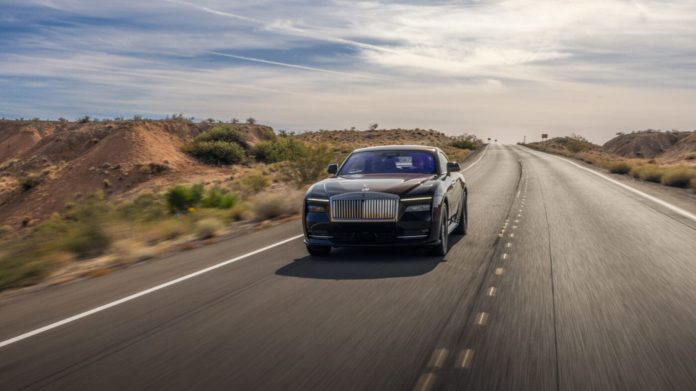It was startling to see how much The Strip had changed. Formula 1’s arrival in Vegas transformed the already glitzy desert city into a full-on spectacle. As our plane turned and lined up for landing, we could see the newly formed track, the stands, and the all-encompassing sphere lit up by a never-ending stream of advertisements. Living in Los Angeles, I’ve made this short hop countless times, but these views, with this chrome and gold-plated town bathed in an early morning glow, were nothing short of spectacular.
But I didn’t come to Vegas to attend the Grand Prix. Instead, I traveled in search of a challenge. A week prior, as construction crews worked round the clock ahead of F1’s arrival, I made a late-night run from Los Angeles in a Rolls-Royce Spectre to attend a drive program held in Death Valley. In that five-hour stint, delayed mainly by rush hour traffic, I learned that the British carmaker’s first electric car and its current flagship couldn’t connect the two cities without a top-up along the way. Or could it?
At the time, around mid-November, Rolls-Royce estimated that the Spectre could only cover around 260 miles on a charge, as an official EPA figure wasn’t yet available. And while that may not sound like much compared to the latest EVs that’ll surpass 400 miles, Rolls-Royce claims it’s more than enough, given that it expects an average Spectre owner to cover around 30 miles per trip.
I was skeptical of this claim when I first heard it during the launch of the Phantom Drophead’s spiritual successor early this year. What if a Spectre owner decided to take a last-minute trip between major cities? Would they be forced to travel by air or in something gas-powered?
According to the Spectre’s navigation system, they’ll have to if they don’t want to stop at a charger for at least 20 minutes along the way, precisely what I had to do on my late-night run. The contrast between cruising for hours in near-silent luxury only to end up standing at a Walmart parking lot, one of the few available chargers on this route, is significant. And while I don’t mind a bit of leg-stretching time and a late-night snack, I can’t say I’d feel the same having spent the over $500,000 price this car commands.

On a hunch that the Spectre could link these two cities nonstop, I returned to Vegas a week after my first run to put this theory to the test. Luckily, the figures were on my side. Roughly 255 miles separate the Wynn Las Vegas, my starting point, from my home in Pasadena, CA, which the Spectre’s estimated 260-mile range should just about cover. I chose Pasadena to close out the trip partly because there’s a Rolls-Royce dealer in town, making this a route an actual owner might take.
But of course, completing the drive isn’t as simple as plugging in my address, setting up cruise control, and sitting back for three and a half hours. On the way west, I-15 climbs to 4,800 feet of elevation back to below 1,000 feet, only to ascend again to 4,200 feet. This route looked like an EV killer, and the Spectre, with its 260-mile estimated range and over 6,500-pound curb weight, would have to cover it all with only five miles to spare.
We arrived at the Wynn just after nine in the morning, following an Uber ride that took us through the F1 track to the resort’s south gate. I say we because I brought my wife along to make this drive as authentic as possible. After all, a Vegas weekend getaway is a two-person affair. As we waited for the valet to fetch the fully topped-up car, we agreed to treat the drive like any other, meaning our starlight roof would be shining, the A/C blasting, and even the massaging seats going at full tilt. This would be no hypermiling journey.
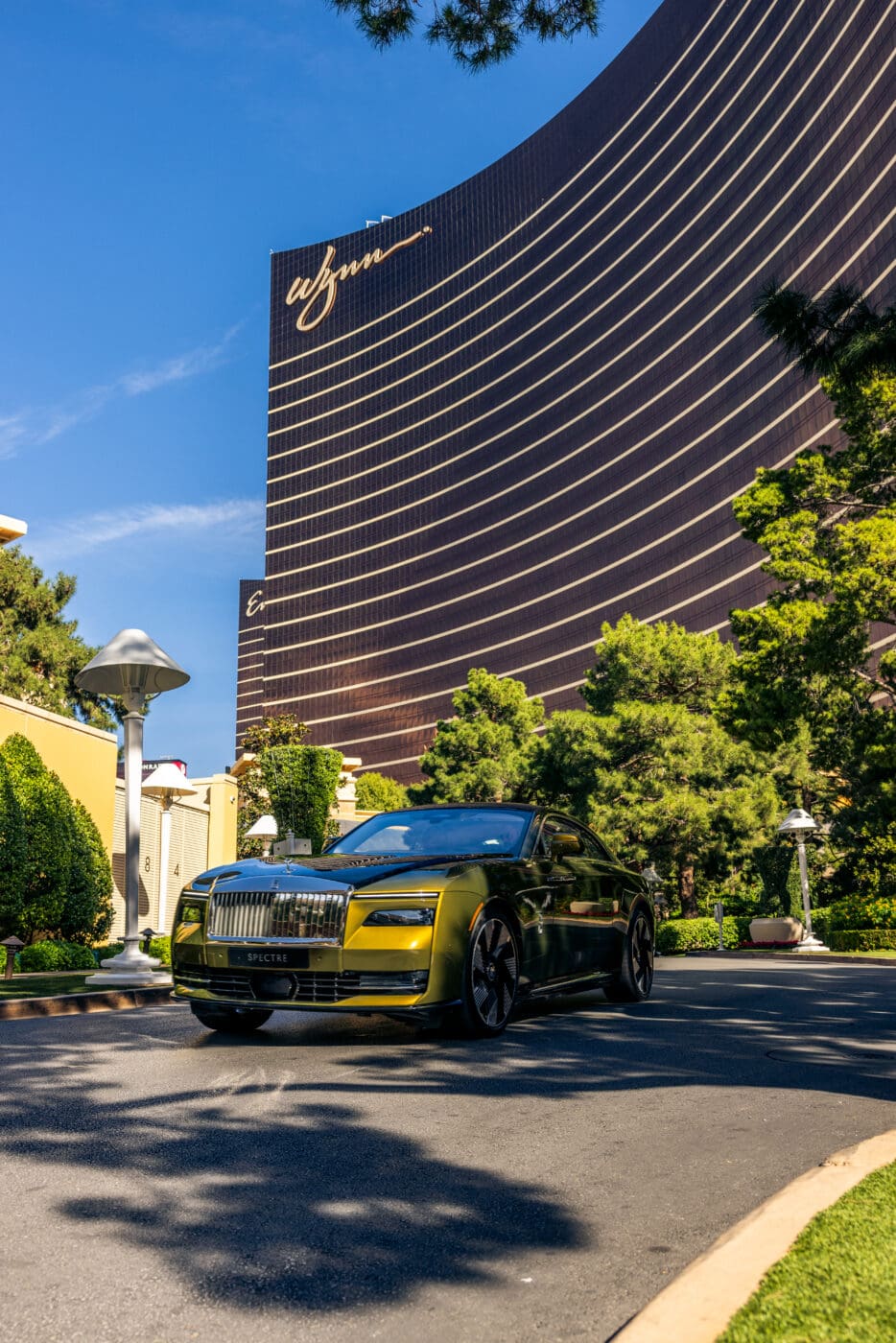
In fact, the only deviation was that I engaged the Spectre’s “B” mode upon startup, which re-charges the battery through regenerative braking. This was a must, given the steep hills we’d have to climb and the resulting accelerated battery drain. Coupled with cruise control, the Spectre would automatically regenerate as much energy as possible, getting us closer to a net-zero loss despite massive altitude fluctuations.
I settled behind the wheel at a quarter to 10 AM with the car showing a 99 percent state of charge and 290 miles of estimated range. Rather than plug in my phone for Apple CarPlay, I let the Spectre devise the route. However, instead of presenting me with options, a warning appeared. The Rolls’ navigation system flat-out said we wouldn’t make it and automatically planned a charging stop at the very Walmart I had stopped at the week before.
I could feel concern emanating from the passenger seat. Still, I deleted the charging stop, to which the car reiterated its earlier warning. This would go on to be far from the last time we’d hear from the Spectre. By the time we left the Wynn and turned onto the GP circuit, the Spectre estimated we’d make it home with three percent to spare. Tempting fate, we pointed the Spectre’s nose south towards I-15, slipping out of Sin City as the multitude of racing fans that flocked to watch the GP slept in.
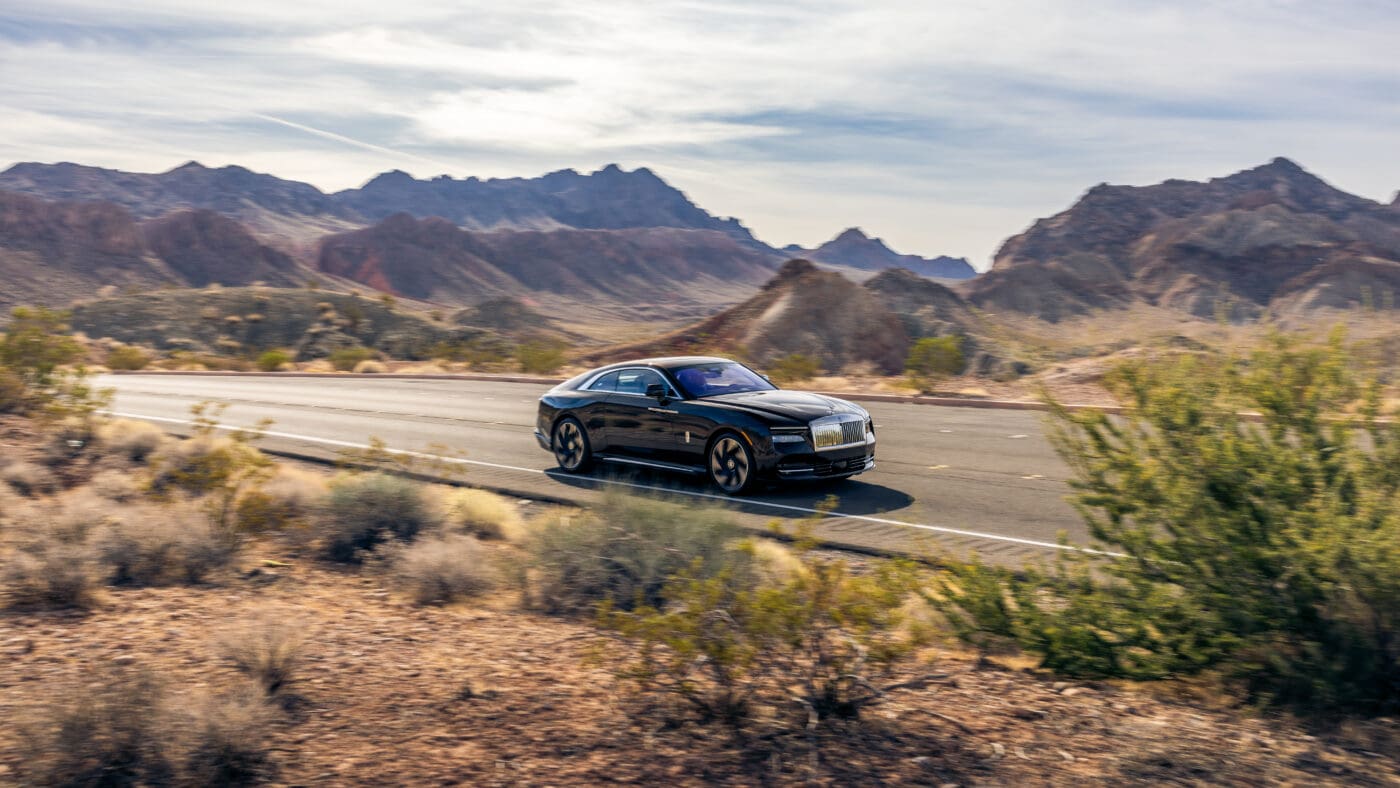
The first hour on I-15 rewarded us with views almost as picturesque as we’d seen on the earlier inbound flight. The Spectre’s near-silent cabin and ultra-plush suspension allow it to essentially disappear from your consciousness. What stands out most isn’t what you hear or feel but what you don’t. This trip is my fourth time logging serious miles in a Spectre, and I’m convinced it’s the quietest and most comfortable car I’ve ever driven. Not even its gas-powered siblings match up.
Having just entered California and with our speed fluctuating between 70 and 80 mph, we hit our biggest unknown of the trip: the climb up Clark Mountain. The road peaked at 4,851 feet as the Sectre’s estimated range plummeted. In minutes, we lost dozens of miles. I could feel myself tensing, already bracing for failure and an inevitable stop. Yet, as we descended, the Spectre’s navigation chimed in with much-needed optimism. It now estimated we’d make it with five percent to spare up from three an hour earlier.
The descent continued for over a dozen miles, with the heavy Rolls regenerating tons of juice. The road dipped to as low as 929 feet as we reached Baker, CA. By 11 AM, our estimated range had stabilized at 208 miles remaining, down from our starting 290 miles, despite us covering around 85 miles. The Spectre hadn’t just tackled the peak; thanks to a lengthy descent on the backend, it left us with a net positive gain as the Mojave Desert flattened. Even our five percent remaining charge estimate had climbed to a more comforting seven.
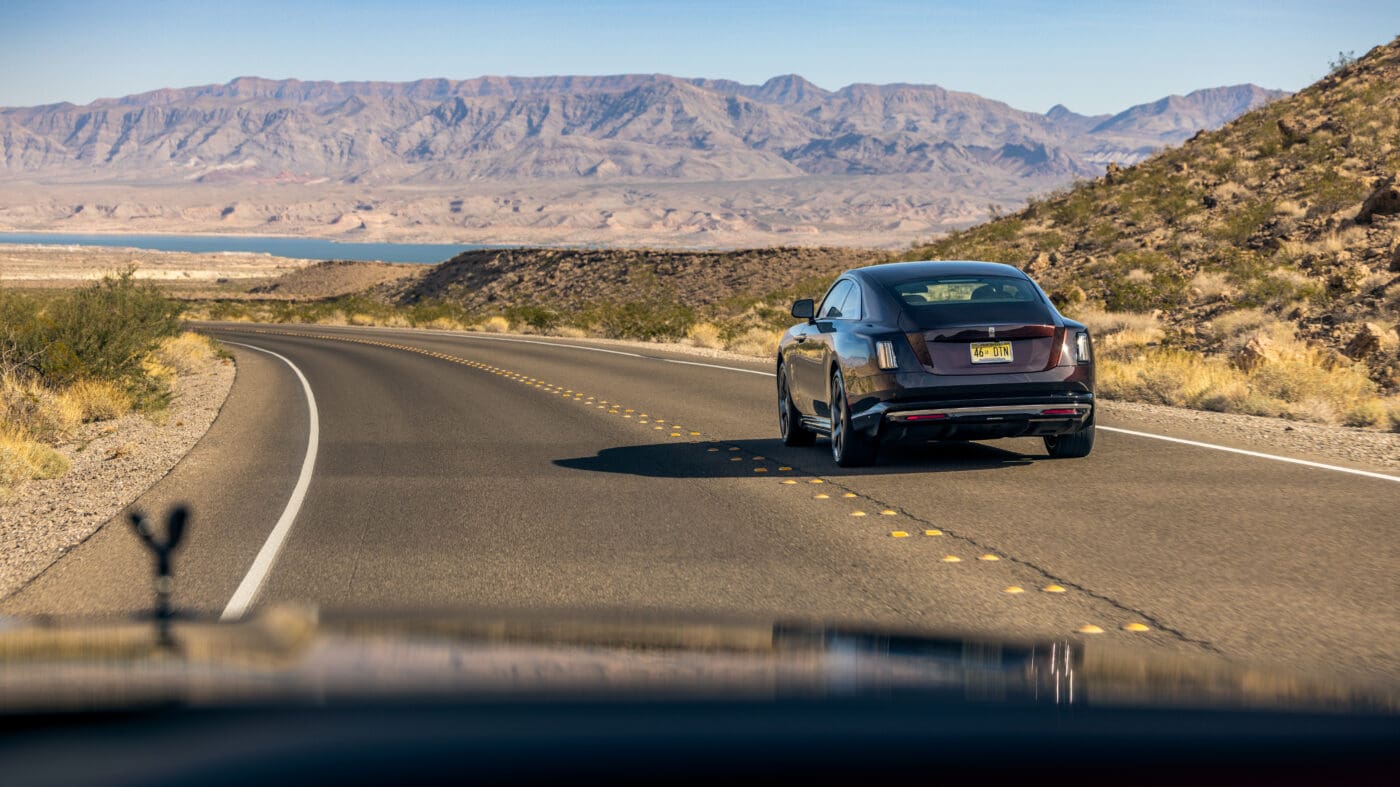
I thank the Spectre’s 6,559-pound curb weight, achieved partially because of its 1,543-pound battery pack, for these gains. Although its heft works against it on the way up, the climb up Clark Mountain is short and steep, whereas the descent is more prolonged and gradual. With cruise control set to 80mph and “B” mode engaged, its weight and gravity provided all the forward motion we’d need, allowing it to quickly regenerate most of the miles we’d lost. With renewed confidence, we pressed on.
Just before 1 PM, we passed Barstow and the Electrify America station I’d stopped at a week earlier. Located at a Walmart, it’s tempting because it has no less than seven 350-kilowatt DC fast chargers, but we didn’t need them today. With 51 miles to go and 76 miles of indicated range, it would be an easy charge to the finish line. I’d gone from feeling confident to fully convinced we’d make it. Minutes later, our remaining charge estimate ticked over to a reassuring 10 percent.
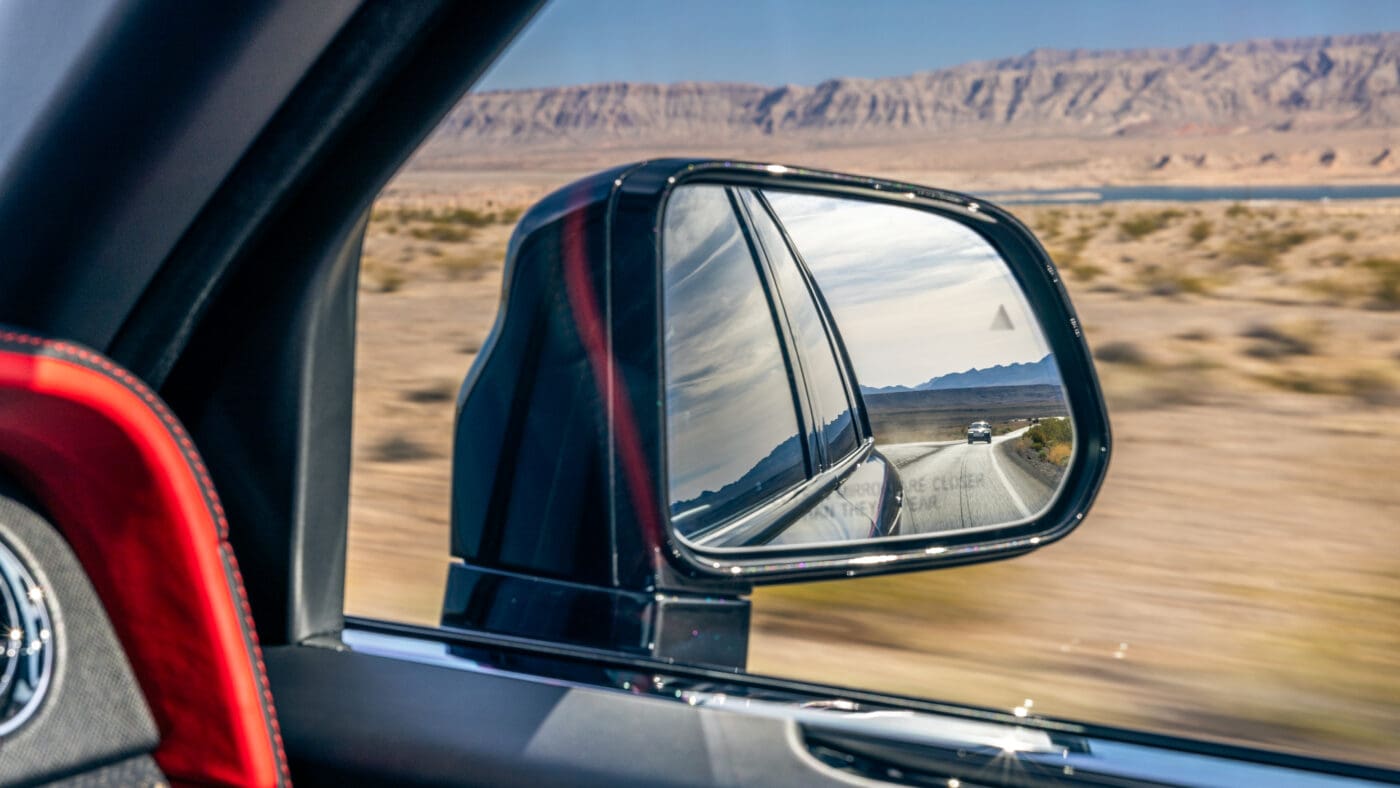
However, as we blitzed past the desert’s final EA station in Victorville, a problem began to brew. We began to climb again as we made our way up the Cajon Pass. Although it peaks at 4,202 feet, 649 feet less than Clark Mountain, its lengthy and gradual ascent killed our range. To make matters worse, the descent was steep but relatively short, and thanks to a build of Saturday afternoon traffic, we inched along for miles with our range barely recovering.
It took an eternity for the road to clear, but the Spectre finally stretched its legs as we entered North Fontana. I picked the pace back up to 80 mph, which seemed to be its regenerating sweet spot, and our range steadily ticked upwards. Heading west on I-210 rewarded us with yet another descent, albeit a shallow one from around 1,500 feet to less than 500 by the time we reached Arcadia. As we approached sea level, my confidence grew. We passed dozens of charging stations, with the Spectre now desperately urging us to stop.
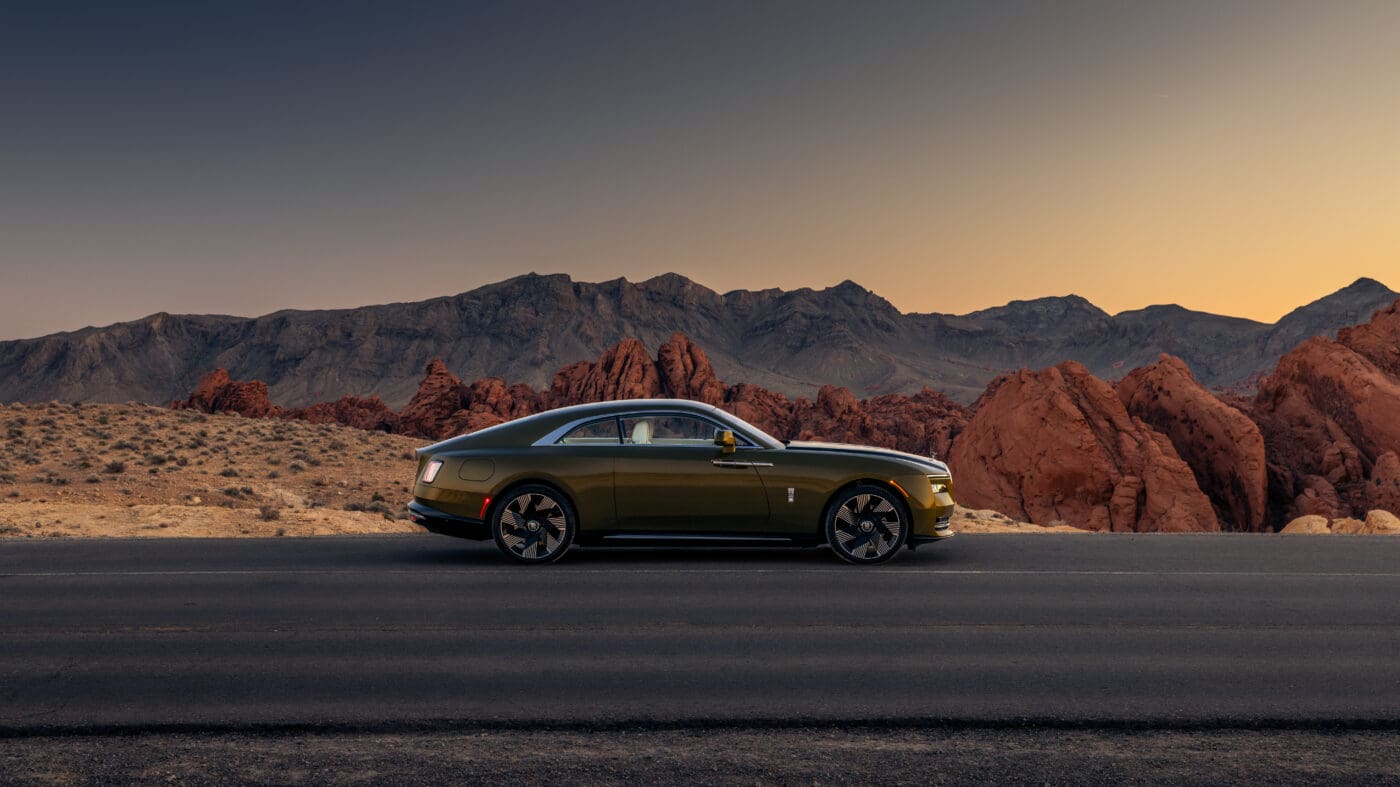
At 1:50 PM, we pulled into our driveway, opened the garage door, and stashed the victorious Spectre. We’d made it with no less than 13 percent remaining and a whopping 47 miles range. The Spectre hadn’t just linked the two cities. It surpassed the carmaker’s earlier estimates, which, like its navigation system, proved very conservative. So conservative that only a few weeks after my journey, the EPA gave the electrified Rolls an official estimated range figure of 291 miles.
By the time I reached an Electrify America station later that day, the Spectre had covered nearly 270 miles with over 20 miles to spare. It achieved this efficiency even after traversing two mountain passes and dense traffic as we neared LA county, all while transporting two of us, listening to music, enjoying separate climates at either end of the cabin, and getting the occasional massage.
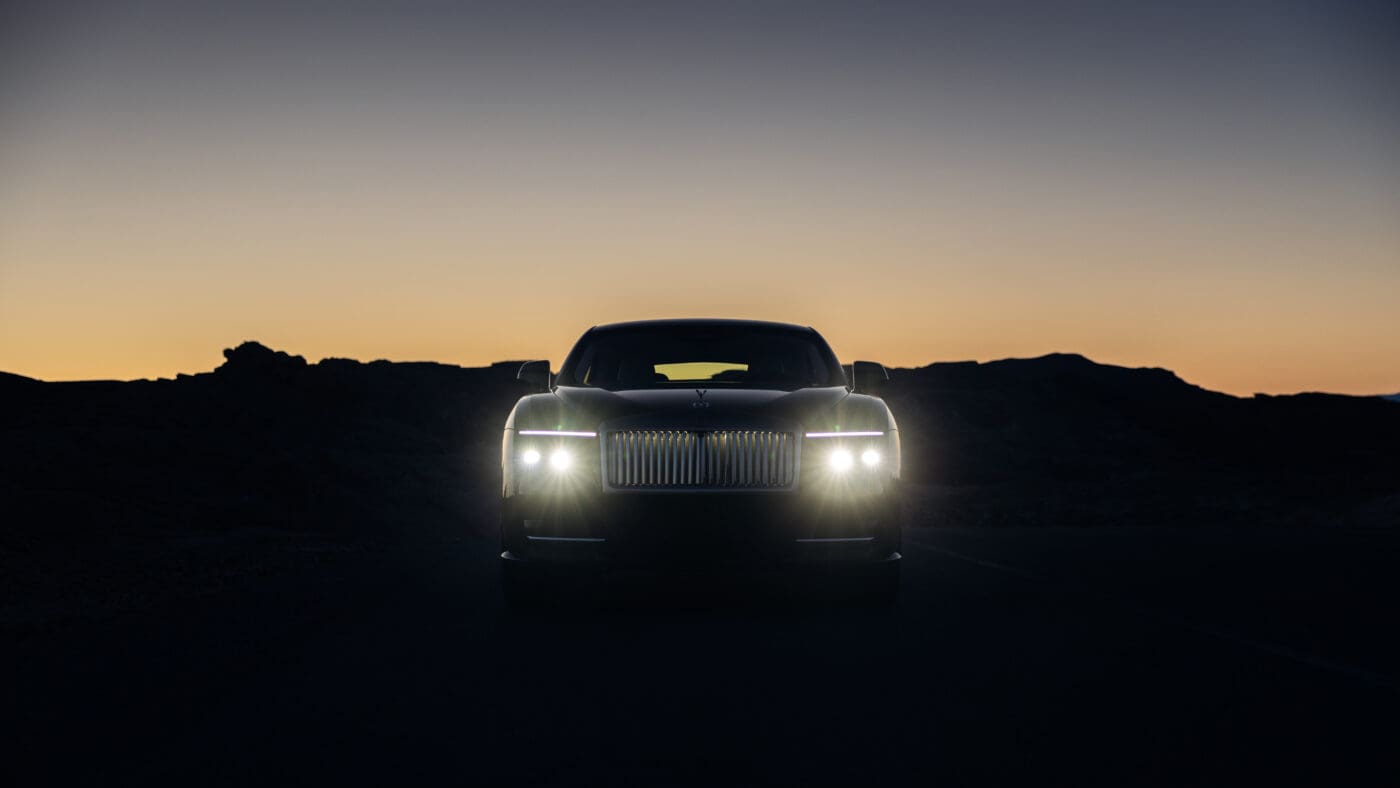
Fully topped up, we headed home for the final time, with our day ending much like it began, with gorgeous mountain views, this time the San Gabriel range illuminated by a sunset glow. The drive from Las Vegas to Los Angeles was tense, but only because we’d done what no one had done before. Knowing what I know now about how well the Spectre regenerates and how accurate its range and charge estimates are, I’d happily do it again without breaking an anxious sweat.
The Spectre is an epic machine. After all, with an as-tested price of over $500,000, it needs to be. But it’s not just its all-out opulence that impresses most. Instead, it’s how well its electric powertrain integrates into the car’s overall ethos. How do you make a Rolls-Royce even quieter? Turns out the answer is to yank out its V12 and stuff it with batteries and electric motors. And while it won’t cover nearly as much distance as a Phantom or a Ghost, it sets a new benchmark for how luxurious a car can be. Now, we can add its status as an efficient road-tripper to its lengthy list of overachievements.

